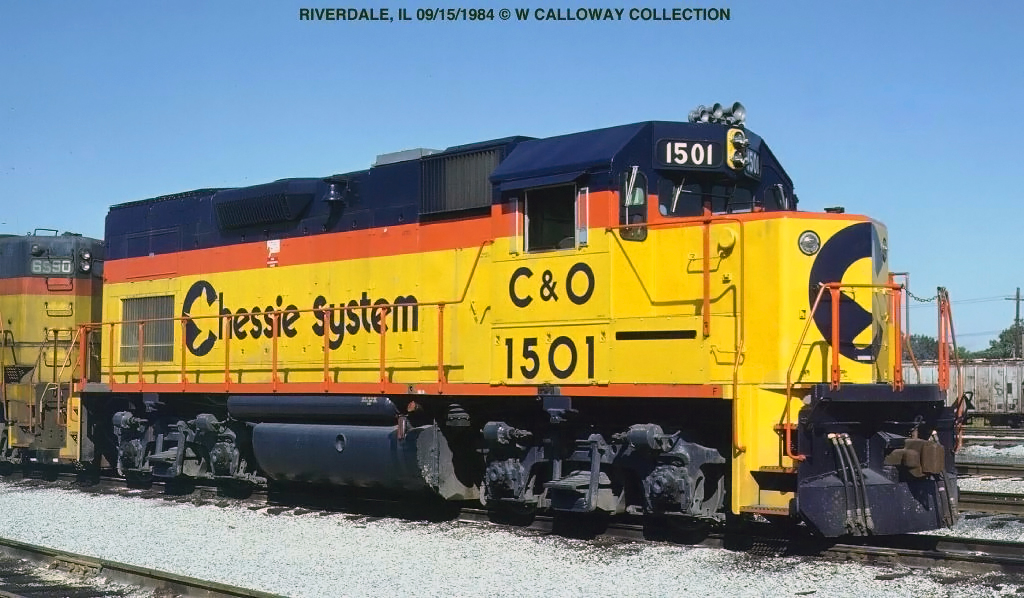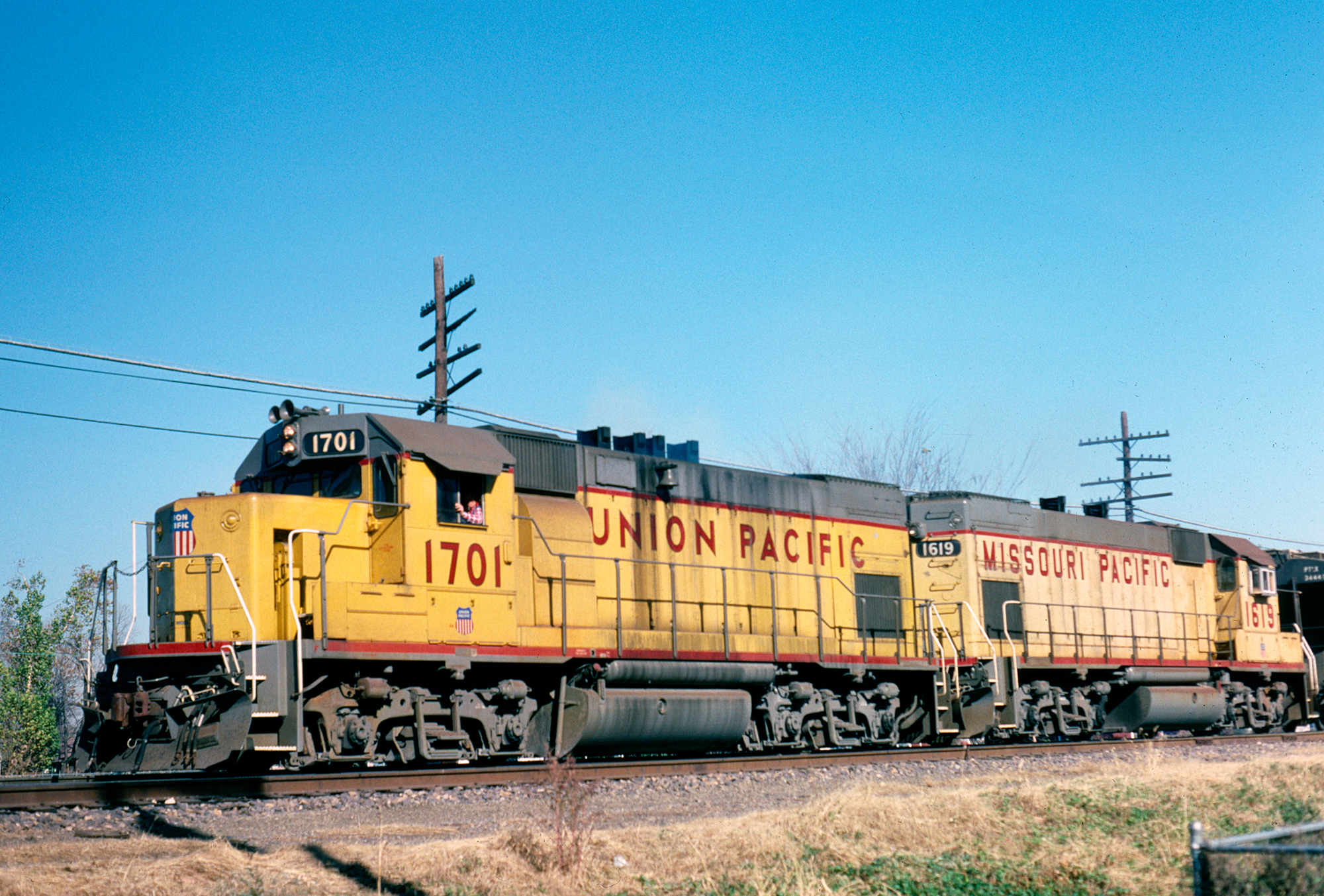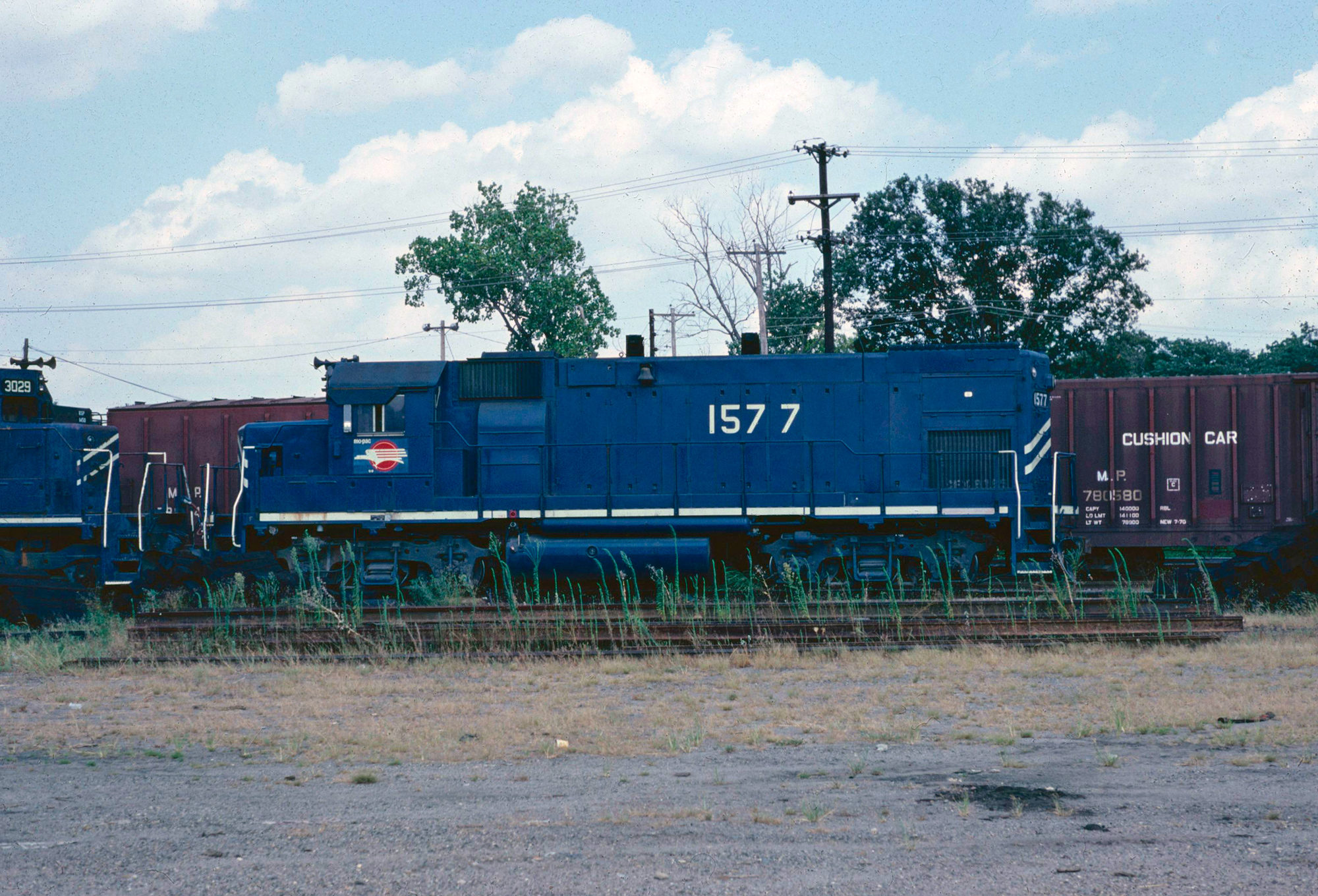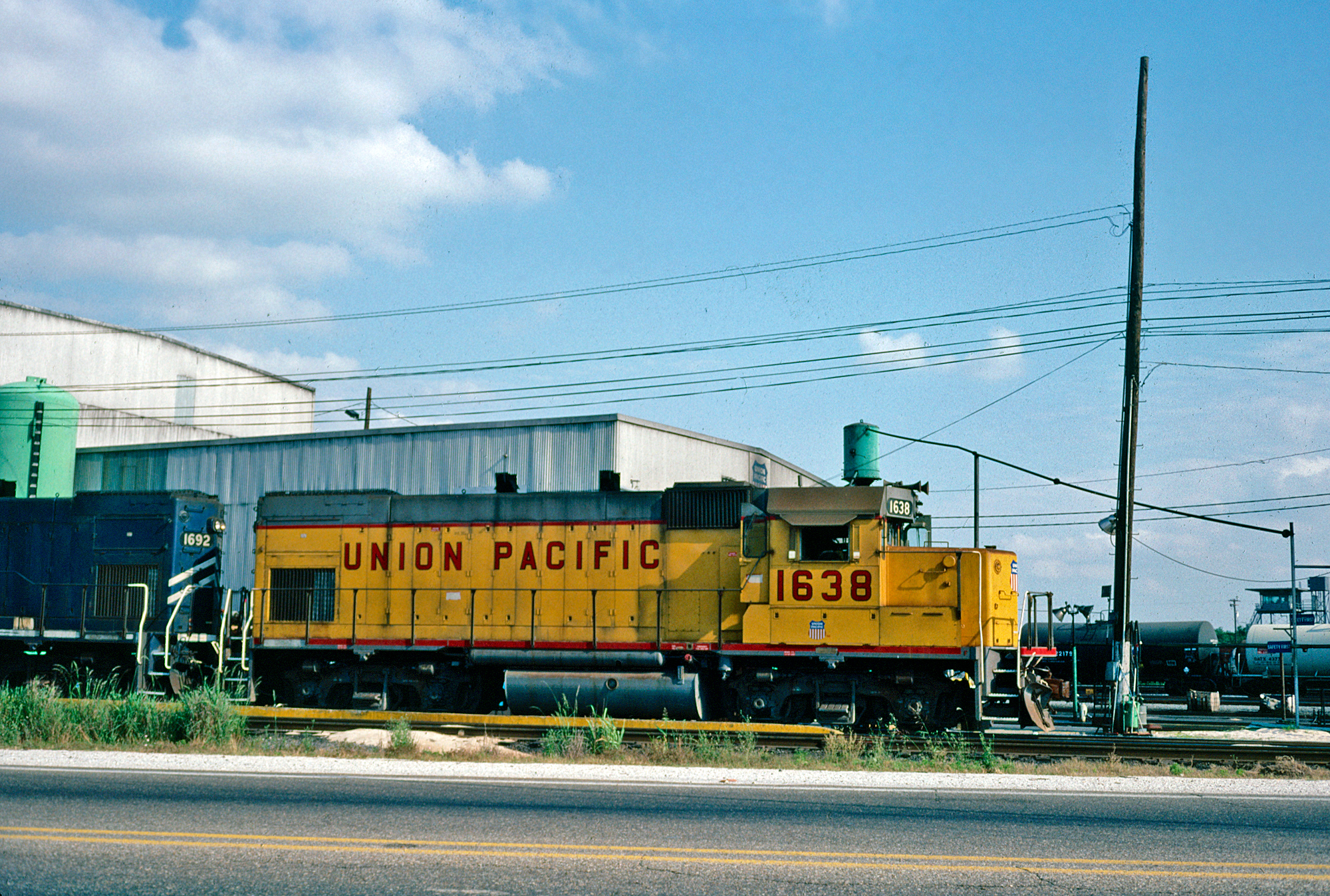EMD "GP15" Locomotives: Specs, Roster, History
Last revised: December 17, 2024
By: Adam Burns
The GP15 series was an early second generation light road-switcher based from Electro-Motive's successful MP15 line of switchers, produced between June 1976 and March 1982. It was designed as a low-cost option for railroads that needed to replace aging fleets of older, less reliable locomotives.
The 645-powered locomotives were designed to compete with railroads' efforts of rebuilding early first-generation variants for extended service in light branch line work.
The initial GP15-1 sold just over 300 examples although many railroads, particularly during the 1970s and early 1980s, could not justify purchasing new units for such applications when aging GP7s, GP9s, and similar units could still handle these assignments.
Following the GP15-1, EMD released an AC version (GP15AC) and the turbocharged GP15T. These variants sold poorly with only 58, total, produced.
Today, several GP15s remain in service on Class I systems (such as Union Pacific and CSX Transportation) as well as smaller lines.
In an era where locomotive manufacturers rarely offer switchers or variants for light-duty service, these Geeps are perfect for such assignments. Ironically, they have outlived newer road-switchers on Class I rosters built some 15 to 20 years later.
Photos
 Chessie System/C&O GP15T #1501 is seen here at Riverdale, Illinios on September 15, 1984. Warren Calloway collection.
Chessie System/C&O GP15T #1501 is seen here at Riverdale, Illinios on September 15, 1984. Warren Calloway collection.Overview
The GP15 was born primarily out of the Chicago & North Western's request that EMD produce a light-road switcher comparable to the railroad's own capital-rebuild program, which was underway on time-worn GP7s and GP9s at its former Chicago Great Western shops in Oelwein, Iowa.
A road-switcher version of the MP15, the GP15-1 was an interesting design of innovation and antiquity. The radiator section and cooling system, influenced by "Tunnel Motor" SD40T-2s and SD45T-2s, were markedly modern, while the uncomplicated "Dash 1" electrical system mirrored the older technological era.
This plain yet functional system was intentionally structured to incorporate reconditioned components from GP7 and GP9 models that were traded-in, specifically the main generators, traction motors, and trucks.
 Union Pacific GP15-1 #1701 (built as Missouri Pacific #1701) and Missouri Pacific GP15-1 #1619 in Kansas City at work in December of 1987. American-Rails.com collection.
Union Pacific GP15-1 #1701 (built as Missouri Pacific #1701) and Missouri Pacific GP15-1 #1619 in Kansas City at work in December of 1987. American-Rails.com collection.Constructed during the height of EMD's reign of manufacturing leader, the company intended the GP15 to be an alternative for railroads looking to rebuild older Geeps like their first generation GP7s and GP9s.
While the builder attempted to keep the GP15-1's price comparable to railroads' rebuild programs, many could not rationalize the expense of new locomotives for minor yard, local, and transfer services, especially when older models were still operational.
 Missouri Pacific GP15-1 #1577 was photographed here in Memphis, Tennessee on July 20, 1981. Author's collection.
Missouri Pacific GP15-1 #1577 was photographed here in Memphis, Tennessee on July 20, 1981. Author's collection.In all, just 301 GP15-1s were produced during a six-year production run that lasted from June, 1976 through March, 1982. Most of the units built were acquired by Conrail (100) and Missouri Pacific (160).
Numbered 1600-1699, Conrail's examples replaced aging first-generation road switchers and F units inherited from Penn Central. Most of these locomotives were completely worn out.
In addition, Missouri Pacific picked up 160 examples in five separate orders acquired between 1976 (four orders) and March, 1982. In fact, the last order, #1705-1714, comprised the final GP15-1s built.
Missouri Pacific also requested a variant equipped with an AR10 alternator in place of the standard D32B32 generators found on the GP15-1s. These units, redesignated as the GP15AC, totaled just 30 examples domestically, all purchased by the MoPac (#1715-1744). In addition, Venezuela's Instituto Ferrocarriles del Estado" (IFE) acquired four GP15ACs.
Data Sheet and Specifications
| Entered Production | 6/1976 (Missouri Pacific #1555) |
| Years Produced | 6/1976 - 3/1982 |
| Engine (GP15-1, GP15AC) | 645E |
| Engine (GP15T) | 645E3C |
| Engine Builder | GM |
| Horsepower | 1500 |
| RPM | 800 |
| Cylinders (GP15-1, GP15AC) | 12 |
| Cylinders (GP15T) | 8 |
| Length | 54' 11" |
| Height (Top Of Rail To Top Of Cab) | 15' 2" |
| Width | 10' 4 ½" |
| Weight (GP15-1, GP15T) | 240,000 Lbs |
| Weight (GP15AC) | 261,000 Lbs |
| Fuel Capacity | 800 Gallons |
| Air Compressor | Gardner-Denver |
| Air Compressor Model | WBO |
| Air Brake Manufacturer | Westinghouse |
| Air Brake Schedule | 24RL |
| Trucks | B-B |
| Truck Type | Blomberg |
| Truck Wheelbase | 9' |
| Wheel Size | 40" |
| Traction Motors | D77B (4), GM |
| Primary Generator (GP15-1) | D32B32, GM |
| Alternator (GP15AC) | AR10 |
| Alternator (GP15T) | AR10-D14 |
| MU (Multiple-Unit) | Yes |
| Dynamic Brakes | Yes |
| Gear Ratio | 62:15 |
| Tractive Effort (Starting) | 61,000 Lbs at 25% |
| Tractive Effort (Continuous) | 48,000 Lbs at 9.3 mph |
| Top Speed | 65 mph |
Production Rosters
GP15-1
Total Built = 310
| Owner | Road Number(s) | Quantity | Date Built |
|---|---|---|---|
| Chicago & Eastern Illinois (MP) | 1570-1574 | 5 | 1976 |
| Chicago & North Western | 4400-4424 | 25 | 1976 |
| Conrail | 1600-1699 | 100 | 1979 |
| Missouri Pacific | 1555-1714 | 160 | 1976-1979 |
| St. Louis San Francisco Railway (Frisco) | 100-124 | 25 | 1977 |
GP15AC
Total Built = 34
| Owner | Road Number(s) | Quantity | Date Built |
|---|---|---|---|
| Missouri Pacific | 1715-1744 | 30 | 1982 |
| Venezuelan National Railways | L007-L010 (GP15-1AC) | 4 | 1982 |
GP15T
Total Built = 28
| Owner | Road Number(s) | Quantity | Date Built |
|---|---|---|---|
| Chesapeake & Ohio | 1500-1524 | 25 | 1982 |
| Apalachicola Northern Railroad | 720-722 | 3 | 1983 |
 Union Pacific GP15-1 #1638 lays over at the former Missouri Pacific shops in New Orleans, Louisiana; November, 1988. American-Rails.com collection.
Union Pacific GP15-1 #1638 lays over at the former Missouri Pacific shops in New Orleans, Louisiana; November, 1988. American-Rails.com collection.In an effort to increase sales, EMD offered a final version, the turbocharged GP15T. This model featured an eight cylinder 645E3C that offered the same horsepower as its predecessors but was more fuel efficient.
It's only noticeable external differences included the exhaust silencer on the roof and larger radiator air intakes. Ultimately, only the Chesapeake & Ohio/Chessie System and Apalachicola Northern, a Florida short lien, purchased the GP15T. Interestingly, while EMD offered all GP15s with dynamic braking, only the C&O's examples were so equipped.
Equipped with fewer cylinders but offering the same horsepower as the standard GP15 it was far more fuel efficient, thus an operational savings to the railroads that purchased it, the C&O/Chessie System and Apalachicola Northern (of note, the former's GP15Ts were equipped with dynamic brakes while the AN's were not).
Interestingly, while few railroads purchased the EMD GP15, many remain in service today as the Class Is which inherited those purchased by their predecessors continue to find the model a reliable and useful light duty unit, notably in yard service.
Sources
- Foster, Gerald. A Field Guide To Trains. New York: Houghton Mifflin, 1996.
- Marre, Louis A. and Pinkepank, Jerry A. Contemporary Diesel Spotter's Guide, The: A Comprehensive Reference Manual To Locomotives Since 1972. Milwaukee: Kalmbach Publishing Company, 1989.
- McDonnell, Greg. Locomotives: The Modern Diesel & Electric Reference, 2nd Edition. Buffalo: Boston Mills Press/Firefly Books, 2015.
- Solomon, Brian. EMD Locomotives. Minneapolis: MBI Publishing Company, 2006.
- Solomon, Brian. GE and EMD Locomotives: The Illustrated History. Minneapolis: Voyageur Press, 2014.
Recent Articles
-
Montana Interurbans and Streetcars: Lines, History, Photos
May 02, 25 12:31 AM
The state of Montana contained no true interurban system but a number of cities did operate local electrified streetcar systems. -
Mississippi Interurbans and Streetcars: History, Lines, Photos
May 02, 25 12:20 AM
Electrified rail lines in Mississippi tended to largely be local streetcar systems; most were gone by 1930. -
Murder Mystery Train Rides: A Complete Guide
May 02, 25 12:00 AM
Murder mystery dinner train rides have been a popular type of train excursion for many years. Find out where these trips can be found.


